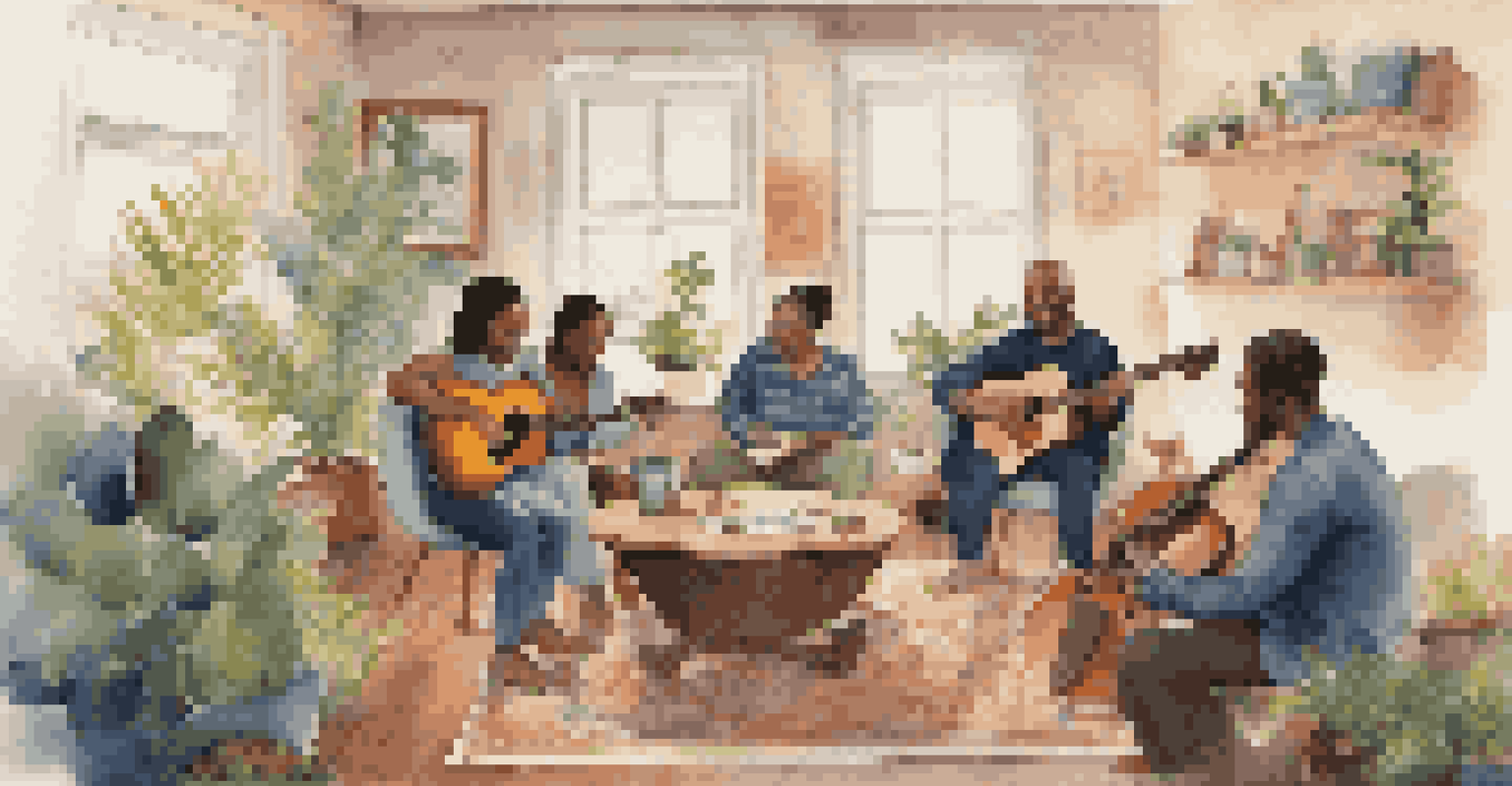The Sound of Healing: Music's Role in Trauma Recovery

Understanding Trauma and Its Impact on Healing
Trauma can leave deep emotional scars, affecting a person's ability to cope with daily life. It often manifests as anxiety, depression, or even physical ailments, making recovery a complex journey. Understanding this impact is crucial to finding effective healing methods, and that's where music steps in as a powerful ally.
Music can change the world because it can change people.
When we think of trauma, it’s easy to focus solely on the psychological effects, but the body also holds onto these experiences. This connection highlights the importance of holistic approaches to healing, which include both mind and body. Music, with its unique ability to resonate with emotions, serves as a bridge between these two aspects.
Moreover, the role of music in trauma recovery isn't just about listening; it's about engaging. Whether it's through creating music, participating in group sessions, or simply listening to a favorite song, these activities can help individuals express feelings that are often hard to articulate.
The Science Behind Music and Healing
Scientific studies have shown that music can reduce cortisol levels, the hormone associated with stress, and promote feelings of relaxation. This physiological response is essential for trauma recovery, as it helps to create a safe space for healing. When the body is relaxed, the mind can start to process traumatic experiences more effectively.

Additionally, music stimulates the brain's reward system, releasing dopamine, which is often referred to as the 'feel-good' hormone. This natural boost can counteract feelings of sadness and anxiety, offering a moment of respite to those dealing with trauma. It's like a gentle nudge toward a positive state of mind, making the healing process feel a bit lighter.
Moreover, music therapy, a structured form of therapeutic practice involving music, has been shown to enhance communication, improve mood, and foster connections between individuals. This therapeutic approach illustrates how music can be a vital tool in rebuilding relationships and social support systems that may have been affected by trauma.
Music as a Safe Space for Expression
For many, music offers a safe haven for expressing emotions that are often too painful to share. When words fail, melodies can voice the unspeakable, allowing individuals to confront their trauma in a less intimidating way. This unique form of expression can facilitate healing by validating feelings and experiences.
Where words fail, music speaks.
Think of a heart-wrenching ballad that resonates with your own struggles; it's as if the artist has put your feelings into words. This connection can be incredibly therapeutic, reminding individuals that they are not alone in their experiences. It cultivates a sense of belonging, which is often crucial in the recovery process.
Furthermore, creating music—whether through writing lyrics or playing an instrument—can empower individuals to take control of their narrative. This act of creation transforms pain into something tangible and beautiful, fostering resilience and hope.
Cultural Variations in Music and Healing Practices
Around the world, different cultures have long recognized the healing power of music. From Indigenous rituals to African drumming circles, the use of music in healing practices is as diverse as humanity itself. Each culture offers unique perspectives on how music can facilitate emotional and spiritual recovery.
For instance, in some Native American traditions, songs are an integral part of healing ceremonies, believed to restore harmony and balance. These cultural practices highlight the communal aspect of music, emphasizing that healing is often a shared journey. Such communal experiences can provide additional support for individuals facing trauma.
In contrast, other cultures may incorporate modern music therapy techniques into their healing practices, blending traditional and contemporary approaches. This fusion not only respects cultural heritage but also adapts to the evolving understanding of trauma and recovery in today's world.
The Role of Rhythm and Melody in Healing
The elements of music—rhythm, melody, and harmony—each play a unique role in the healing process. Rhythm, for instance, can help regulate emotions and physical responses, creating a sense of stability during turbulent times. This is particularly important for trauma survivors who may feel unsteady or overwhelmed.
Melody, on the other hand, can evoke powerful emotions and memories, guiding individuals through their healing journey. A soothing melody might bring comfort, while a more upbeat tune can inspire hope and motivation. This versatility makes music an invaluable tool for various stages of recovery.
Additionally, the communal aspect of music, such as singing or dancing together, further enhances its healing properties. These shared experiences can foster a sense of connection and solidarity, reminding individuals that they are not alone in their struggles.
Personal Stories: Music's Transformative Power
There are countless stories of individuals whose lives have been profoundly impacted by music during their trauma recovery. For example, a young woman might find solace in writing songs about her experiences, transforming her pain into powerful anthems of resilience. Such personal narratives highlight music's capacity to empower and heal.
Another example could be a veteran who uses drumming as a form of emotional release. The rhythmic beats not only provide an outlet for bottled-up feelings but also connect him with others who share similar experiences, creating a supportive community. These stories underscore music's role as a catalyst for change and healing.
These personal accounts remind us that the journey of healing is deeply personal and unique. Music, in its many forms, provides a language that transcends words, allowing individuals to articulate their experiences and find strength in vulnerability.
Integrating Music Into Daily Healing Practices
Integrating music into daily life can be a simple yet effective way to support trauma recovery. Creating a playlist of uplifting songs or calming melodies can provide a quick emotional boost during challenging moments. This intentional use of music can help individuals cultivate a positive mindset.
Incorporating music into mindfulness practices, such as meditation or yoga, can also enhance the healing experience. The combination of soothing sounds and mindful movement encourages relaxation and self-awareness, allowing individuals to reconnect with their bodies and emotions. It's a gentle reminder to be present in the moment.

Additionally, forming or joining a music group can foster social connections and provide a sense of community. Whether it’s a choir, drum circle, or even a casual jam session, these shared experiences can help individuals feel supported and understood, further aiding their recovery journey.